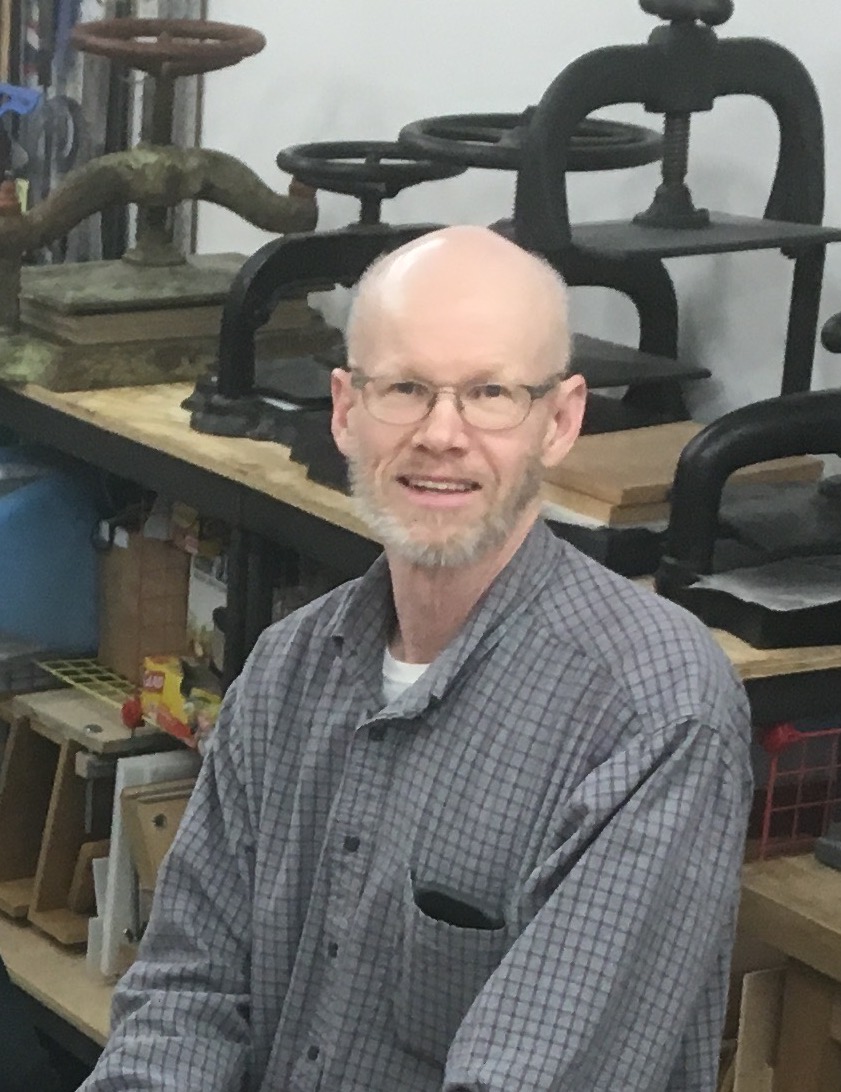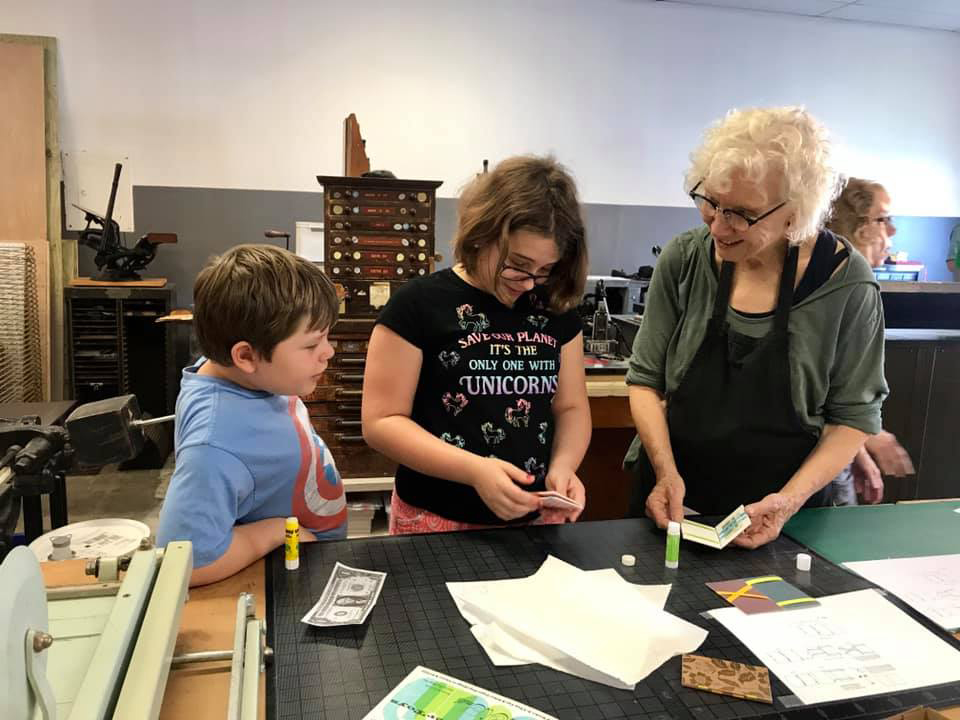Here’s another one from the Biblio Files, a periodic profile of a community member, highlighting what makes ABAC an awesome place to work and to learn!
- What is your role at Austin Book Arts Center?
Instructor of Bookbinding.
2. What is a special memory of teaching at Austin Book Arts Center?
In general, how connected and focused my students become in the making process. This connection between the human, their hands, and making an object.
3. What distinguishes book arts from other art forms?
As someone who views myself as a craftswoman, I consider book arts through the lens of traditional bookbinding. Therefore akin to other crafts, such as woodworking, structure often comes first. These technical concerns govern the choice of materials, making the final product all the more rewarding as the result of the craftsperson’s limited and trained decisions working within a fixed range of possibilities.
4. What is your background?
My background began in the craft of papermaking, working at the Oakdale Papermaking Facility and with Tim Barrett at the University of Iowa Center for the Book (UICB).
5. What drew you to study book arts?
I remember when my former professor showed us students his gampi paper and deerskin book as a demo for the first time. I was amazed by the contrast between the rough texture of these homespun materials and the precise mechanics of the book which allowed these delicately thin sheets of paper to be easily turned from page to page. Additionally, Pamela Spitzmueller was working for the UICB and her research with the Long Link Stitch got me to take a course in non-adhesive bookbinding. Afterward I moved to Austin and met Olivia Primanis and Mary Baughman at the HRC Harry Ransom Center when volunteering. They encouraged me to take classes at the Academy of Bookbinding where I met Don Etherington my instructor. I took classes over the years before finally learning of the North Bennett Street School that Mark Esser began in 1984, a bookbinding program. He was a student of Bill Anthony from the UICB (never met him as he passed away), but was greatly influenced by his craftsmanship which Mark learned and most likely influenced the studies there. I studied under Jeff Altepeter for two years and returned home to Austin.
6. What are you working on now?
More than working on my original designs I have recently been focusing on book restoration. At NBSS we spent little time on this aspect of bookbinding, but I enjoy the challenge of being presented with various binding structures and using my skills as a binder and papermaker to restore them. My focus is to restore them in a way they just seem to be books that have been well cared for over the years. Their patina remains intact, but the “dust” of the book seems removed. I like to be invisible and let it be about the book.






